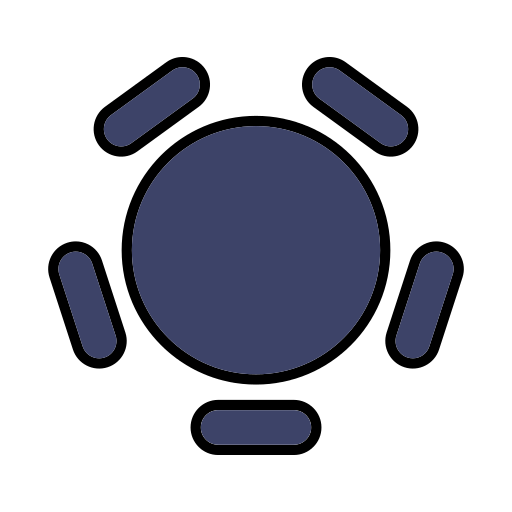Table of Contents
- Defining the Terms
- Key Differences
- When to Use Each Approach
- Effective Strategies
- Measuring Success
- Tools and Technologies
- Wrap-up
- FAQ
Defining the Terms
In the world of SaaS sales, two terms often get mixed up: lead generation and prospecting. Let’s break them down.
Lead generation is about creating interest in your product or service. It’s like casting a wide net to catch fish. You’re trying to get people to notice you and maybe give you their contact info.
Prospecting, on the other hand, is more targeted. It’s like going fishing with a spear. You’re looking for specific people or companies that you think would be a good fit for what you’re selling.
Why It Matters
Knowing the difference between these two can help you choose the right approach for your business. It’s not just about getting more names in your database. It’s about finding the right people who are more likely to buy from you.
Key Differences
Let’s look at some of the main ways lead generation and prospecting differ:
| Aspect | Lead Generation | Prospecting |
|---|---|---|
| Focus | Quantity | Quality |
| Timeframe | Long-term | Short-term |
| Approach | Passive | Active |
Lead generation is often a marketing function, while prospecting is typically done by sales teams. This difference in ownership can affect how each process is carried out and measured.
According to a study by Cognism, “Prospecting is the first step in a sales process, while lead generation is related to marketing.” This highlights the different roles these activities play in the overall sales funnel. You can read more about this distinction here.
When to Use Each Approach
Choosing between lead generation and prospecting depends on your goals and resources. Here’s a quick guide:
Use lead generation when:
• You’re looking to build brand awareness
• You want to create a large pool of potential customers
• You have time to nurture leads over a longer period
Use prospecting when:
• You need quick results
• You’re targeting a specific type of customer
• You have a clear idea of who your ideal customer is
Combining the Two
Often, the best approach is to use both lead generation and prospecting. They can work together to create a steady flow of potential customers at different stages of readiness to buy.
Effective Strategies
Let’s look at some strategies for both lead generation and prospecting:
Lead Generation Strategies:
• Content marketing (blogs, ebooks, webinars)
• Social media campaigns
• SEO optimization
• Paid advertising
Prospecting Strategies:
• Cold calling
• LinkedIn outreach
• Targeted email campaigns
• Attending industry events
The key to successful prospecting is having accurate, up-to-date information about your potential customers. This is where tools like saasyDB can be invaluable, providing detailed profiles of SaaS companies and their decision-makers.
Measuring Success
To know if your efforts are paying off, you need to track the right metrics. Here’s what to look at:
| Metric | Lead Generation | Prospecting |
|---|---|---|
| Conversion Rate | Leads to MQLs | Prospects to Opportunities |
| Cost Per | Cost per Lead | Cost per Meeting Booked |
| Time to | Time to MQL | Time to First Meeting |
It’s important to note that these metrics can vary widely depending on your industry and target market. As pointed out in this article from RevNew, “It measures how much revenue you generate compared to the cost of acquiring leads and prospecting them to convert.” You can find more insights on measuring ROI here.
Tools and Technologies
The right tools can make a big difference in both lead generation and prospecting. Here are some popular options:
Lead Generation Tools:
• HubSpot
• Marketo
• Mailchimp
• Google Analytics
Prospecting Tools:
• LinkedIn Sales Navigator
• ZoomInfo
• Outreach.io
• saasyDB
Speaking of saasyDB, it’s worth noting that this tool offers a unique approach to prospecting in the SaaS industry. With access to over 10,000 SaaS company leads and a credit system that unlocks complete contact details for an entire company, it can be a powerful asset for targeted prospecting efforts.
AI and Automation
Artificial Intelligence is changing the game in both lead generation and prospecting. AI can help with:
• Identifying patterns in customer behavior
• Personalizing outreach at scale
• Predicting which leads are most likely to convert
While AI can make these processes more efficient, it’s important to remember that the human touch is still crucial in building relationships with potential customers.
Wrap-up
Understanding the difference between lead generation and prospecting is crucial for any SaaS company looking to grow its customer base. While lead generation casts a wide net to attract potential customers, prospecting focuses on identifying and reaching out to specific, high-potential targets.
Both approaches have their place in a comprehensive sales strategy. The key is to use them in a way that aligns with your business goals and resources. By leveraging the right tools and strategies, you can create a steady pipeline of qualified leads and prospects, setting your SaaS business up for sustainable growth.
Remember, the goal isn’t just to get more names in your database. It’s about finding the right people who are more likely to become long-term, valuable customers for your SaaS product.
FAQ
Q: Is lead generation or prospecting more important for a SaaS business?
A: Both are important, but their relative importance depends on your business model, target market, and growth stage. Many successful SaaS companies use a combination of both approaches.
Q: How long does it take to see results from lead generation vs prospecting?
A: Generally, prospecting can yield quicker results, while lead generation is more of a long-term strategy. However, the exact timeline can vary based on your specific tactics and target market.
Q: Can I outsource lead generation or prospecting?
A: Yes, many companies choose to outsource these activities. However, it’s important to work with a partner who understands your industry and can represent your brand effectively.
Q: How do I know if I’m targeting the right prospects?
A: Start by defining your ideal customer profile. Tools like saasyDB can then help you find companies and contacts that match this profile, increasing your chances of success.
Q: How often should I update my lead and prospect lists?
A: Regularly. In the fast-paced SaaS industry, companies and roles can change quickly. Using a tool that provides real-time updates, like saasyDB, can help ensure your information is always current.


Leave a Reply